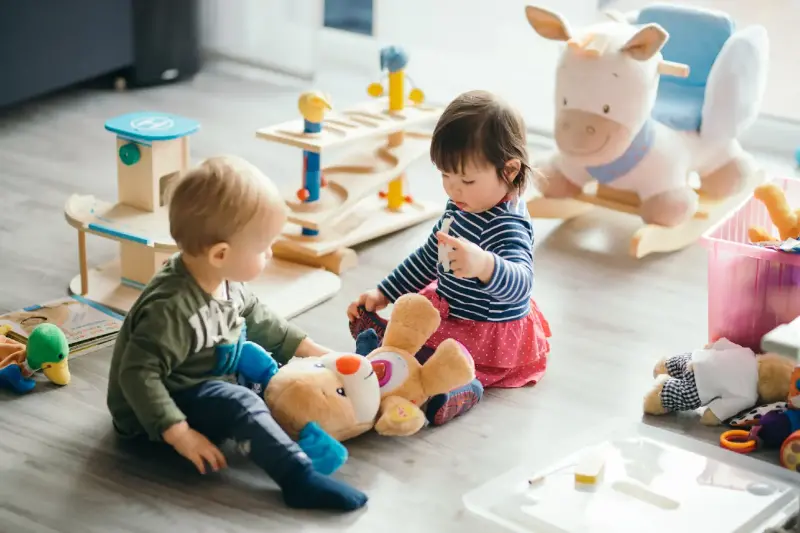There’s something uniquely memorable about the bond between siblings—a relationship that can swing joyfully between camaraderie and rivalry. While it’s natural for brothers and sisters to squabble, studies show that nurturing sibling harmony has far-reaching benefits. From building lifelong emotional skills to creating a resilient family network, the dynamics between siblings deserve as much attention as any other aspect of parenting. Let’s look at some surprising facts and handy strategies parents can use to foster more peaceful, affectionate relationships between their children.

Why Sibling Harmony Truly Matters
Sibling squabbles are common, but the quality of sibling relationships can have a lasting impact. Research from the University of Cambridge reveals that children with supportive sibling relationships show higher empathy, stronger self-esteem, and fewer behavioural problems both in childhood and adulthood. Psychologist Laurie Kramer notes, “The sibling relationship is the longest you’ll likely have—far longer, on average, than with parents, partners, or friends.”
It’s also fascinating that siblings are an early ‘social laboratory’, where children learn negotiation, emotional regulation, and conflict resolution. According to the Sibling Relationship Questionnaire, supportive siblings can buffer each other against stressful life events, such as parental divorce or a move to a new city. In fact, adults who maintain close ties to their siblings tend to report greater happiness and reduced loneliness.
Unravelling Sibling Rivalry: Surprising Truths
Contrary to popular belief, minor arguments are not only inevitable but beneficial. Siblings learn to manage emotions and develop resilience by navigating everyday disputes. Dr Judy Dunn’s landmark study showed that sibling rivalries often rise in early childhood, peak around ages 6–8, and gradually mellow during adolescence if heated competition is met with empathy rather than punishment.
It may surprise you that birth order’s influence, such as the myth of the rebellious middle child or over-responsible eldest, is more nuanced than once thought. Modern research suggests these stereotypes are less powerful than general family dynamics and individual personalities. Shared experiences, family stress levels, and parental responses shape sibling bonds far more than birth order alone.

Practical Tools for Daily Harmony
Understanding is only half the journey—action makes the difference. Many parents wonder, “How do I stop them from fighting all the time?” Instead of aiming for conflict-free days, the goal should be guiding siblings to handle conflict constructively and find joy in each other’s company.
One of the most powerful tools is one-on-one time. Experts recommend parents spend short, regular periods with each child individually, which helps reduce competition for attention and minimises jealousy. Equally, encouraging cooperative play or projects—like building a fort or co-authoring a family newsletter—offers natural opportunities for teamwork.
Modelling emotional intelligence is also crucial. When parents verbalise their feelings (“I’m disappointed the dinner went cold”) and show conflict resolution (“I hear you’re upset. Let’s find a solution together”), children internalise these strategies. Practising ‘active listening’ with siblings—reflecting back what was said and checking feelings—can turn a shouting match into a meaningful conversation.
Transforming Conflict into Connection
It’s inevitable that brothers and sisters will have disagreements, but these don’t need to result in lasting resentment. Create ‘family meetings’ where everyone’s voice is heard, and agree upon ground rules for respectful disagreements. These meetings can be light-hearted but offer a structure for siblings to practice negotiation and compromise.
Experts also suggest using “same team” language to emphasise family unity (“How can we solve this together?” or “What would help your brother feel better?”). Visual reminders, such as a family “team” poster on the fridge, reinforce the idea that everyone plays a part in the household’s success.
Practising gratitude together is another simple but effective tool. Taking just a moment each day to share something positive about each sibling shifts the focus from rivalry to appreciation, gradually resetting family interactions in a more harmonious direction.

Navigating the Digital Divide
Today’s siblings are growing up with unique challenges, including competition for screen time and digital attention. Rather than letting digital devices drive wedges between siblings, incorporate technology in ways that promote positive interaction. For example, choose games that require cooperation, or set up a shared digital journal where siblings can post photos, tell stories, or plan a virtual “holiday” for the family. Agree on digital boundaries as a group, ensuring everyone’s views are valued.
Importantly, encourage “device-free” rituals, such as a Friday night board game or story round-table, to remind siblings of the pleasures found in each other’s company without screens.
Support From Wider Circles
While parents set the tone at home, extended family and close friends can play valuable roles. Invite grandparents or family friends to host special “sibling days”, reinforcing family bonds without the pressures of the usual environment. Participating in community groups or sibling-focused workshops can help brothers and sisters learn new skills together and recognise the universality of sibling dynamics.
